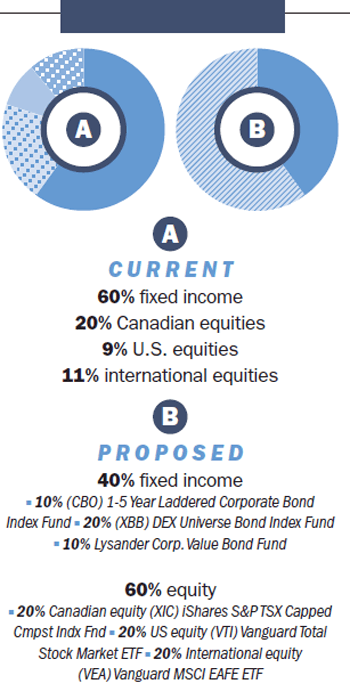Manage various RRSP accounts
Darlene and Bill Stymie hold various RRSP accounts and don’t have a clear sense of how effectively their investments are working together.
Advertisement
Darlene and Bill Stymie hold various RRSP accounts and don’t have a clear sense of how effectively their investments are working together.

 The Solution
The SolutionShare this article Share on Facebook Share on Twitter Share on Linkedin Share on Reddit Share on Email